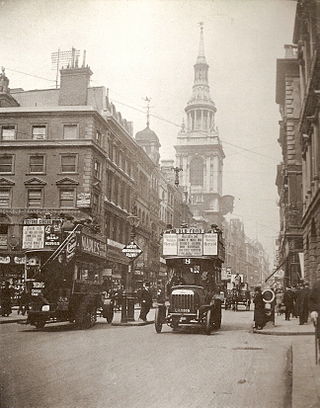
The Crown Jeweller is responsible for the maintenance of the Crown Jewels of the United Kingdom, and is appointed by the British monarch. The current Crown Jeweller is Mark Appleby, who was appointed in 2017.

The Crown Jeweller is responsible for the maintenance of the Crown Jewels of the United Kingdom, and is appointed by the British monarch. The current Crown Jeweller is Mark Appleby, who was appointed in 2017.
The post was created in 1843 by Queen Victoria, who issued a royal warrant to Garrard & Co., and the title of Crown Jeweller was vested in an employee of the company. [1] Until then, Rundell & Bridge, who advertised themselves as Crown jewellers, [2] had been responsible for maintaining and preparing Jewels for use at state occasions. [3] If the title had existed before 1843, it would have applied to William Jones of Jefferys & Jones (1782–96), Philip Gilbert of Jefferys, Jones & Gilbert (1797–1820), and Rundell & Bridge (1821–43). Before 1782, the work of repairing and making the Crown Jewels was distributed to various goldsmiths and jewellers on an ad-hoc basis. [2]
David V. Thomas (1991–2007) stated that he had been always on call, ready to attend to the Jewels. [4] William Summers, the sixth Crown Jeweller (1962–91), said of his job: "Where the Crown goes, there go I". [5]
In 2007, Garrard & Co. were replaced, the reason given that it was time for a change. [6] The company had been acquired by a private equity firm in 2006. [7] Harry Collins of the family business G. Collins & Sons, who was also Queen Elizabeth II's personal jeweller, was appointed the new Crown Jeweller. [8] In 2012, Collins stepped down from the role and Martin Swift of Mappin & Webb became the Crown Jeweller. [9] In 2017 he was replaced by Mark Appleby, the head of Mappin & Webb's jewellery workshop. [10]

The Imperial State Crown is one of the Crown Jewels of the United Kingdom and symbolises the sovereignty of the British monarch. It has existed in various forms since the 15th century. The 1937 version is worn by a new monarch for the first time in the royal procession following their coronation and subsequently used at State Openings of Parliament. The crown is adorned with 3,170 precious stones, including the Cullinan II diamond, St Edward's Sapphire, the Stuart Sapphire, and the Black Prince's Ruby.

The Diamond Diadem, historically known as the George IV State Diadem, is a diadem that was made in 1820 for King George IV. The diadem has been worn by queens regnant and queens consort in procession to coronations and State Openings of Parliament. It has been featured in paintings and on stamps and currency.

George Heriot was a Scottish goldsmith and philanthropist. He is chiefly remembered today as the founder of George Heriot's School, a large independent school in Edinburgh; his name has also been given to Heriot-Watt University, as well as several streets in the same city.

Garrard & Co. Limited, formerly Asprey & Garrard Limited, designs and manufactures luxury jewellery and silver. George Wickes founded Garrard in London in 1735 and the brand is headquartered at Albemarle Street in Mayfair, London. Garrard also has a presence in a number of other locations globally. Garrard was the first official and most notably important Crown Jeweller of the United Kingdom having supplied jewels for Queen Victoria, and was charged with the upkeep of the British Crown Jewels, from 1843 to 2007, and was responsible for the creation of many tiaras and jewels still worn by the British royal family today. As well as jewellery, Garrard is known for having created some of the world's most illustrious sporting trophies, including the America's Cup, the ICC Cricket World Cup Trophy and a number of trophies for Royal Ascot in its role as Official Trophies and Silverware Supplier, which originally dates back to the first Gold Cup in 1842.
Wartski is a British family firm of antique dealers specialising in Russian works of art; particularly those by Carl Fabergé, fine jewellery and silver. Founded in North Wales in 1865, the business is located at 60 St James's Street, London, SW1. The company holds royal appointments as jewellers to Charles III and the late Queen Elizabeth II.
Rundell & Bridge were a London firm of jewellers and goldsmiths formed by Philip Rundell (1746–1827) and John Bridge.
Sir John Spilman was a Lindau, German-born entrepreneur who founded the first commercially successful paper-mill in England, establishing a factory on the River Darenth in Dartford, Kent in 1588. Spilman was also jeweller to Queen Elizabeth I, and was knighted by King James I.

Mappin & Webb is an international jewellery company headquartered in England, tracing its origins to a silver workshop founded in Sheffield in 1775. It now has retail stores throughout the UK.

Queen Elizabeth II owned a historic collection of jewels – some as monarch and others as a private individual. They are separate from the gems and jewels of the Royal Collection, and from the coronation and state regalia that make up the Crown Jewels.

The Cheapside Hoard is a hoard of jewellery from the late 16th and early 17th centuries, discovered in 1912 by workmen using a pickaxe to excavate in a cellar at 30–32 Cheapside in London, on the corner with Friday Street. They found a buried wooden box containing more than 400 pieces of Elizabethan and Jacobean jewellery, including rings, brooches and chains, with bright coloured gemstones and enamelled gold settings, together with toadstones, cameos, scent bottles, fan holders, crystal tankards and a salt cellar.
David Vyvyan Thomas was the Crown Jeweller for the British monarchy. He worked for the Royal Family from 1991 until his retirement in 2007 as an employee of Garrard & Co. He still retains three Royal Warrants.
G. Collins & Sons Limited is a jewellery firm at 76/78 High St, Royal Tunbridge Wells in southeast England.
Philip Rundell (1746–1827) was a highly prosperous English jeweller, fine jewellery retailer and master jewellery makers' business proprietor, known for his association with royalty. With John Bridge, he ran and co-owned Rundell and Bridge, a firm with widespread interests in the jewellery and precious metal trades.

Shaun Leane is a British jewellery designer best known for his sculptural pieces created for Alexander McQueen. His eponymous jewellery brand is a four-time winner of the UK Jewellery Designer of the Year award.
Costume and gold and silver plate belonging to Elizabeth I were recorded in several inventories, and other documents including rolls of New Year's Day gifts. Arthur Jefferies Collins published the Jewels and Plate of Queen Elizabeth I: The Inventory of 1574 from manuscripts in 1955. The published inventory describes jewels and silver-plate belonging to Elizabeth with detailed references to other source material. Two inventories of Elizabeth's costume and some of her jewellery were published by Janet Arnold in Queen Elizabeth's Wardrobe Unlocke'd.

Charles Henry Truman, FSA, was an art historian and a leading authority on gold boxes.
Arnold Lulls was a Flemish goldsmith and jeweller in London. He served the court and made several pieces intended as diplomatic gifts.

The Three Brothers was a piece of jewellery created in the late 14th century, which consisted of three rectangular red spinels arranged around a central diamond. The jewel is known for having been owned by a number of important historical figures. After its commission by Duke John the Fearless of Burgundy, the jewel was part of the Burgundian crown jewels for almost 100 years, before passing into the possession of German banker Jakob Fugger.

The jewels of Anne of Denmark (1574–1619), wife of James VI and I and queen consort of Scotland and England, are known from accounts and inventories, and their depiction in portraits by artists including Paul van Somer. A few pieces survive. Some modern historians prefer the name "Anna" to "Anne", following the spelling of numerous examples of her signature.

Philip Jacobson was a London goldsmith who worked for James VI and I and Anne of Denmark.